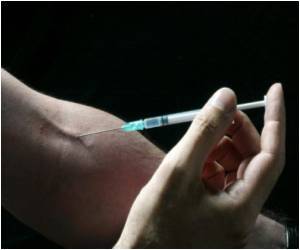Researchers have developed a new microneedle made from silk which helps to deliver precise amount of drugs over time without need for refrigeration.

The research paper "Fabrication of Silk Microneedles for Controlled-Release Drug Delivery" appeared in Advanced Functional Materials December 2 online in advance of print.
The Tufts researchers successfully demonstrated the ability of the silk microneedles to deliver a large-molecule, enzymatic model drug, horseradish peroxidase (HRP), at controlled rates while maintaining bioactivity. In addition, silk microneedles loaded with tetracycline were found to inhibit the growth of Staphylococcus aureus, demonstrating the potential of the microneedles to prevent local infections while also delivering therapeutics.
"By adjusting the post-processing conditions of the silk protein and varying the drying time of the silk protein, we were able to precisely control the drug release rates in laboratory experiments," said Fiorenzo Omenetto, Ph.D., senior author on the paper. "The new system addresses long-standing drug delivery challenges, and we believe that the technology could also be applied to other biological storage applications."
The Drug Delivery Dilemma
While some drugs can be swallowed, others can't survive the gastrointestinal tract. Hypodermic injections can be painful and don't allow a slow release of medication. Only a limited number of small-molecule drugs can be transmitted through transdermal patches. Microneedles—no more than a micron in size and able to penetrate the upper layer of the skin without reaching nerves—are emerging as a painless new drug delivery mechanism. But their development has been limited by constraints ranging from harsh manufacturing requirements that destroy sensitive biochemicals, to the inability to precisely control drug release or deliver sufficient drug volume, to problems with infections due to the small skin punctures.
Advertisement
"Changing the structure of the secondary silk protein enables us to 'pre-program' the properties of the microneedles with great precision," said David L. Kaplan, Ph.D., coauthor of the study, chair of biomedical engineering at Tufts and a leading researcher on silk and other novel biomaterials. "This is a very flexible technology that can be scaled up or down, shipped and stored without refrigeration and administered as easily as a patch or bandage. We believe the potential is enormous."
Advertisement











